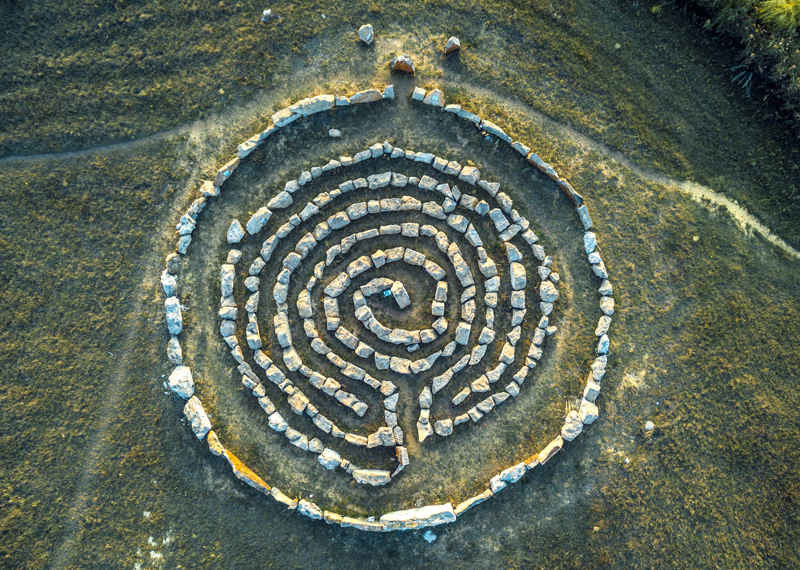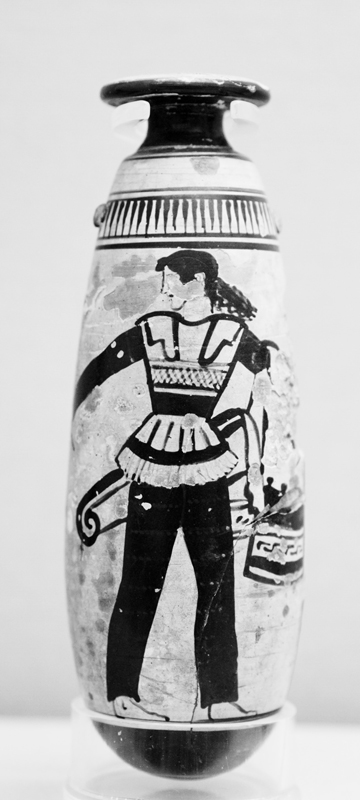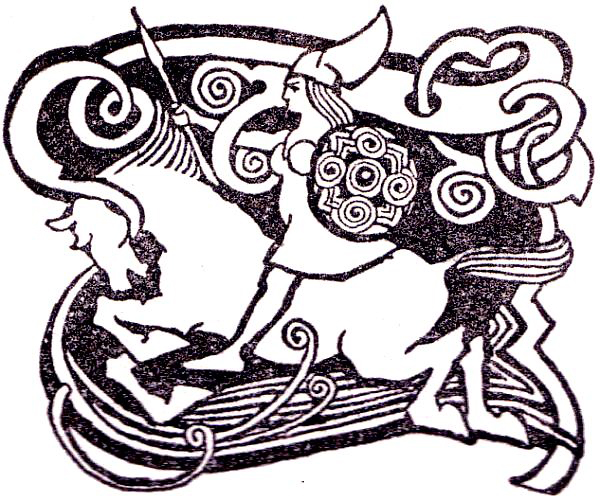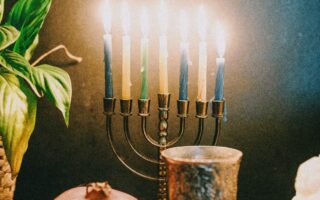Free women – an ancient and modern theme at the crossroads of science and mythology
Author: Eire Rautenberg
In ancient times, the existence of female societies was undisputed. They lived mainly around the Black Sea, which is why it got its name: the Amazon Sea – at that time. And back then the dominion of women was generally respected.
Today, once again, what ancient sources have long attested to is being questioned. Do the followers of the patriarchies that have allegedly existed for ten millennia want to confirm each other out of fear of the Free Woman, who has regained political and social strength since the Second World War? Has the authoritative influence of the patriarchally oriented Christian Church for 2,000 years pushed all contrary statements to the sidelines? Catholics of bygone days often recited that women were a danger, sinful beings in the eyes of God. They did not want to deal spiritually ‘for crying out loud’ with the idea of free women, independent of men. Is this why the European witches were burned?
Everywhere and for centuries, Christians felt threatened by women’s desire for freedom.
As midwives, they dominated the subjects of birth and death, until men also took away this privilege from them. The Amazons of antiquity were probably breathing down the necks of the male rulers as a spiritual spectre, and such a blasphemy of the strict Christian faith, which was based on a fixed order of man and woman – given by a male-conceived God on earth – was not to be questioned. Could not be what was not allowed to be? These are all questions I asked myself in the course of my research on the Amazons.
 The Amazons© Adobe Photostock
The Amazons© Adobe Photostock
THE AMAZONS – ONLY A MYTH?
In the last centuries European schools taught that Amazons never existed because they were only mythological. But mythology is the historical tradition from earlier times, when there was no writing and many things transferred orally. A later embellishment of the irrevocable core of truth of every mythological tradition is implied.
The thinking and feeling of ancient and pre-ancient societies differed fundamentally and significantly from the thinking and feeling of modernity.
Although this is clear and acknowledged, this fact often receives too little attention in modern scientific interpretations.
Scientific expertise must go hand in hand with deep knowledge of mythology.
Perhaps, accordingly, a new picture of the legendary stories will emerge. Thus we will come a quantum closer to the truth. As a freelance journalist and author interested in history I would wish that some things are reconsidered by the experts, especially since in the meantime there are irrefutable proofs for the former existence of the Amazons, also by archaeological findings.
There were women at all times who fought against the patriarchy.
In ancient times Amazons tribes in Africa, in Macedonia and in Syria defended themselves against invaders and fought against the revolting, power-hungry son, the rising sun god to preserve the matriarchy, their very own culture and the religion of the Great Mother.
Most people today are familiar with the Amazons from Greek mythology. One of the last battles they fought before sinking into oblivion was in Greece against Greek men. This battle they ultimately lost after fighting to the death. In memory of their heroism, monuments were erected throughout Greece, in the places where they fought and fell. Also in Greek art there are many representations praising the beauty, strength and courage of women.
PRIESTESSES, QUEENS AND WARRIORS IN ANTIQUITY
Legends tell that Amazons in ancient Libya (= modern Morocco) for the very first time tamed and rode wild horses. And since then the goddess of the moon reminisces to horses everywhere. In the myths of the womenfolk, they often worshipped the goddess as a mare. In Crete, for example, as Leukippe, the White Mare. The priests had to have castration and wore women’s clothes.
Among the Scythians, too, men supposedly have voluntarily entered the service of the goddess and worn women’s clothing. Some of the Scythians settled in Parthia (in northern modern Iran), the virgin land. Its name comes from the goddess. Priest-queens ruled the Scythians, who usually buried them individually in richly furnished ‘kurgans’. Five kurgans (burial mounds/tumuli) were discovered in southern Russia in 1954. David W.Anthony wrote in 2007 about a similar kurgan excavation, “About twenty percent of the open kurgans of Scythian and Sarmatian warriors on the lower Don and lower Volga have contained women dressed for battle like men, a phenomenon that probably fed Greek stories about the Amazons.”
According to Diodorus, Scythian women “fought like men and are in no way inferior to them in bravery.” Scythian priestesses were old and gray-haired, thus probably representing the aspect of the Black Ancients, the last aspect of the Triune Goddess. They used the so-called crescent moon, a long-handled form of the sickle, the scythe of death, still called ‘scythe’ in English today, as a weapon in religious ceremonies and in agriculture. Celtic priests (the Druids) later used the small form of the crescent moon, but only for ritual purposes. Today’s initiated witches also still carry the small sickle as a working knife, the so-called boline.
 Amazon in pants with shield and quiver (Attic Alabastron, c. 470 B.C.)
Amazon in pants with shield and quiver (Attic Alabastron, c. 470 B.C.)
Several ancient authors locate the Amazons with their people migrating from Central Asia to Africa. There they have had a large empire, a so-called Amazonia. Or so they say. Apart from their large territories in Northeast/Central Asia and Asia Minor (Anatolia/Cappadocia). Also supposedly the Amazons took different Mediterranean islands, for example Malta and Cyprus, with the handed down city foundation of Paphos. Allegedly also Tauros, Lemnos and Lesbos have had purely female settlements.
THE NAME OF THE AMAZONS
In the end, the meaning of the name has not yet been scientifically proven. Why not? For me it is not comprehensible, because the mythical-religious meaning of these women is obvious. So I dare a linguistic approach: The name of the people derivates from ancient Persian uma sonna, which means daughters of Uma (moon goddess). Uma derives from Indo-Aryan languages, meaning the gracious, maternal, lunar aspect of the Great Goddess. In ancient Vedic contexts, the term indicates excessive asceticism in any form, which in principle would also fit Amazons. Ama/Amme (mother, suckling) means synonymously the word root -uma.
Uma is also currently a Hindu goddess, epithet of Parvati, the mother of the world, which means ‘the blessing, gracious one’ or ‘the shining one’. The solar aspect of the Indian Umas’ name is Gauri. Parvati herself is called Gauri (= the blonde, golden, bright, shining, white) in Hindu mythology. She is the ‘cow of Gaur’ (= Bos gaurus), an epithet of Varuna’s wife (see the Iranian god Varuna). Wore the Amazons blonde hair? In Iranian mythology, Ama is a female deity of courage and strength, analogous to the Greek god of battle Ares. So the holy book of Zoroastrianism transferred it from the Avesta. It seems logical that Amazons saw themselves this way, since they worshipped Ares (Roman: Mars) as the male version of courage and strength.
 Valkyrie on horseback by Arthur Rackham
Valkyrie on horseback by Arthur Rackham
Zone is commonly translates to (Greek) belt. The ‘chiton’, the short garment of the fighting women, held together in the middle only with a belt, in double girding with the complete armor hanger.
Amazon in the first version was called ‘belt of the Great Mother’ or ‘belt of power’. In Greek mythology there is the magic belt of the Amazon queen Hippolyte. The original myths say, that the precious belt belongs to the god Ares (Mars). This seems like an old wives’ tale, because so-called magic belts developed in early times from a female-oriented symbolism, which male heroes later adopted. Heracles stole Hippolyte’s noble belt. He therefore killed many of her female warriors.
(Note: In another variant, the magic belt reminds of Donar-Thor, who also possessed a ‘belt of power’ and vaguely reminisces to Ares-Mars. The magic belt also suggests the ‘collar of the Germanic goddess Frija/Freia’: the ‘Brisingamen’). (Note: In Norse mythology, the seven dwarves forged the magic neck ring from precious stones and gave it to the goddess of love for the coitus they desired). Zone is also understood as the region of a local dominion. Accordingly, the whole term Amazon would mean Empire of the Great Mother in this second coherent version.
 About the author
About the author
Eire Rautenberg (born 1956 in Dortmund) has been writing poetry and prose since her youth, which has been published in numerous works of her own, magazines and anthologies. In addition to her writing activities, she works as a freelance journalist. In 1984 she was the founder and owner of the well-known bookstore Pentagramm in Dortmund. As a publishing agent, Eire traveled NRW from 2003 to 2006 and founded her own media agency, Rautenberg, in 2007. For the past ten years, she has been a lecturer in the field of literature and poetry at universities and has led seminars in the areas of life support and natural religion. She will publish new non-fiction books in September 2021.
All information can be found at: www.eire-rautenberg.de
This article appeared originally on the German Homepage of Tattva Viveka: Die Amazonen




